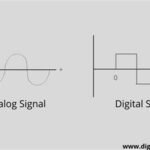Once you’ve mastered the basics of DJing, such as beatmatching and track transitions, it’s time to elevate your craft with advanced mixing techniques. These skills will help you stand out, create unique sets, and deliver memorable performances. Here’s a guide to some of the most effective advanced mixing techniques that will transform your DJ sets.
1. Harmonic Mixing
Harmonic mixing involves blending tracks in compatible musical keys to create seamless and musically pleasing transitions. It enhances the emotional impact of your sets and prevents clashing tones.
How to Apply Harmonic Mixing:
- Use a key detection tool or software like Mixed In Key to identify the musical key of your tracks.
- Follow the Camelot Wheel, a visual guide to mixing compatible keys. For example, if your track is in 8A, mix with tracks in 7A, 8A, or 9A for smooth transitions.
- Experiment with key changes to build tension or resolve energy during your set.
2. Creative EQing
EQing (equalization) is more than balancing frequencies; it’s a powerful tool for adding depth and dynamics to your mixes.
Techniques for Creative EQing:
- Isolating Elements: Gradually cut or boost specific frequency ranges (e.g., bass, mids, or highs) to emphasize different parts of a track.
- Filter Sweeps: Use high-pass or low-pass filters to create smooth build-ups or fade-outs during transitions.
- Frequency Layering: Balance overlapping tracks by cutting frequencies where another track dominates, ensuring clarity in your mix.
3. Live Looping and Sampling
Incorporating live loops and samples adds originality to your sets and allows you to create on-the-fly remixes.
How to Master Live Looping:
- Use your DJ controller or software’s looping feature to isolate a beat, melody, or vocal.
- Layer loops over existing tracks to build complexity.
- Experiment with sample pads to trigger one-shots, effects, or vocal snippets for a live performance feel.
4. Layering Tracks
Layering involves playing multiple tracks simultaneously to create a rich and dynamic sound.
Tips for Effective Layering:
- Choose tracks with complementary rhythms, tempos, and keys.
- Use instrumental or acapella versions to avoid vocal clashes.
- Gradually introduce layers, starting with subtle percussive elements before adding melodies or vocals.
5. Energy Flow Management
Managing energy flow is crucial for creating a captivating journey in your sets.
Strategies for Managing Energy:
- Build-Ups and Drops: Use build-up effects like reverb, echo, or filters before hitting a powerful drop.
- Energy Levels: Alternate between high-energy and low-energy tracks to maintain audience interest.
- Tension and Release: Create moments of tension using effects or harmonic dissonance, followed by resolutions with smooth transitions.
6. Advanced Transitions
Professional DJs use creative transitions to make their sets unique.
Examples of Advanced Transitions:
- Beat Juggling: Manually alternate between two tracks on the same beat to create rhythmic variations.
- Echo Outs: Use an echo effect on the outgoing track to smoothly fade it out while introducing the next track.
- Key Shifts: Transition between tracks with gradual pitch changes to shift keys musically.

7. FX Mastery
Effects (FX) are great tools for adding flair to your mixes, but they should be used sparingly to avoid overloading the sound.
Essential FX Techniques:
- Reverb and Delay: Use these for smooth transitions or to add atmosphere to specific sections.
- Flanger and Phaser: Create dramatic build-ups with swirling, modulated effects.
- Roll and Echo Freeze: Loop or freeze parts of a track to transition seamlessly into the next song.
8. Double Drops
A double drop involves aligning the drops of two tracks to hit simultaneously, creating an explosive effect on the dance floor.
How to Execute a Double Drop:
- Identify the drop points in both tracks.
- Use beatmatching and phrasing to align the drops.
- Practice timing to ensure both tracks hit their peak energy together.
9. Back-to-Back (B2B) Mixing
If you’re collaborating with another DJ, back-to-back mixing allows for a dynamic and unpredictable set.
Tips for Successful B2B Mixing:
- Communicate with your partner about the direction and vibe of the set.
- Alternate track selections to keep the mix fresh.
- Incorporate your unique styles to complement each other’s energy.
10. Practice and Experimentation
Becoming proficient in advanced mixing techniques takes practice and experimentation. Dedicate time to:
- Exploring different genres to expand your versatility.
- Experimenting with unconventional transitions to develop your signature style.
- Recording your sets and analyzing them for areas of improvement.
Conclusion
Advanced mixing techniques are the key to transforming your DJ sets from ordinary to extraordinary. By mastering harmonic mixing, creative EQing, and energy flow management, you can create unforgettable musical experiences. Remember, the best DJs are those who constantly innovate and refine their craft. So keep practicing, experimenting, and pushing the boundaries of what’s possible in your mixes.











